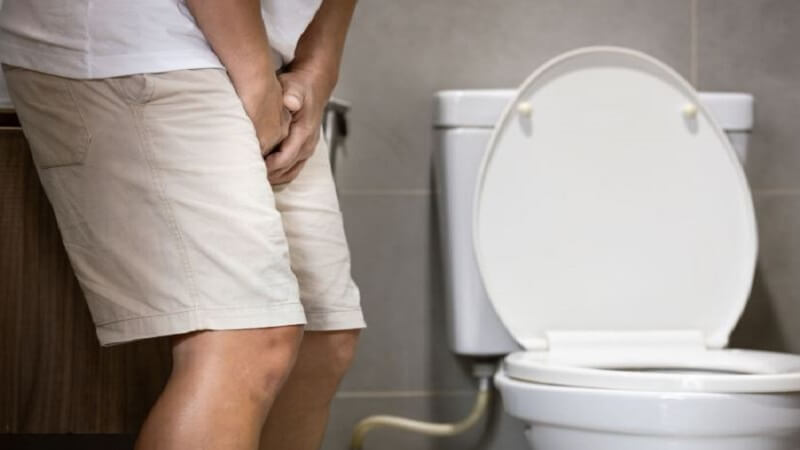Knowing your bladder health is vital, especially with urinary retention. This condition prevents you from fully emptying your bladder. It may cause discomfort and other problems.
Doctors have typically used catheterization to check leftover urine after you try to urinate. Yet, this method can be invasive and uncomfortable.
Thanks to technological advancements, portable bladder scanners are now available. These devices can assess bladder volume without invasively using catheters.
This article will explain the importance of bladder scanners.
1. Understanding Urinary Retention
Urinary retention is the inability to fully empty your bladder. Some urine remains, called postvoid residual (PVR).
Both acute and chronic urinary retention can happen due to various situations.
- Acute urinary retention is sudden and may cause severe discomfort.
- Chronic urinary retention develops gradually and might not be as noticeable at first.
Leftover urine can lead to health risks, which is why doctors often use bladder scans to measure PVR. If the levels are too high, they may suggest catheterization to help empty the bladder.
Recognizing the signs and symptoms is crucial for your health.
2. Signs and Symptoms of Urinary Retention
Urinary retention often means urine remains in the bladder after you try to urinate. This condition can be obvious or may not present clear symptoms.
Here are some common signs you might experience with acute urinary retention:
- Abdominal discomfort: You may notice bloating or pain in the area just above your pubic bone.
- Involuntary urine leakage: Occasionally, you might find yourself wetting without any control.
- Frequent urge: You’ll likely feel a strong need to urinate often.
- Straining: You may struggle at the start of urination. This could cause a stop-and-start flow.
- Confusion: Severe bladder fullness can confuse, especially in children and the elderly.
- Infections: Bacteria can thrive in any leftover urine. This raises your risk of urinary tract infections.
These symptoms may indicate bladder problems. They may require medical attention.
Clinical Uses of Bladder Scanners
Bladder scanners in clinics benefit patients and doctors. They provide accurate data. This data helps decide if catheterization is necessary.
Here are some notable benefits:
- Reduced Discomfort: A bladder scanner often avoids unnecessary catheterization. It spares patients the pain and discomfort of that procedure.
- Cost Efficiency: Avoiding unnecessary catheters lowers treatment costs, making healthcare more affordable for everyone involved.
- Fewer Infections: Patients are at a lower risk of developing catheter-related urinary tract infections, which means shorter hospital stays.
Bladder scanners benefit healthcare staff too. They reduce the need for catheters, boosting morale and saving time and effort.
The training needed to use bladder scanners is minimal, and you can quickly learn to operate these devices in just a few minutes.
Their non-invasive nature makes them a safe choice for patients. It enhances comfort during assessments.
To learn more about non-invasive bladder scanners click here.
How Do Bladder Scanners Work?
A portable bladder scanner has two main parts: a probe and an LCD screen. Many also include trolleys or trays for easy use in healthcare settings.
During a scan, the probe sends ultrasound waves to the bladder. These waves return to the scanner, which then creates 3D images and measures urine volume.
Here’s how to perform a bladder scan:
- Wear gloves and disinfect the probe.
- Lay the patient on their back.
- Apply gel to the abdomen and place the probe over the bladder.
- Start the scan and select the patient type if needed.
- Check the screen for images and urine volume to decide on catheterization.
Typically, a bladder volume of 500 mL or more suggests urinary retention. This often needs immediate catheterization to avoid complications.
Scanning methods can vary by model. So, understanding your device is crucial for accuracy.
When to Use and Not to Use a Bladder Scanner
Bladder scanners are useful tools for assessing bladder function after urination in various locations, such as clinics, hospitals, and home care settings. However, they may not be suitable for every patient.
Consider using a bladder scanner when:
- You need a non-invasive way to check bladder volume.
- Patient comfort and privacy are priorities.
- You’re in a clinical or long-term care environment. Avoid using a bladder scanner when:
- The patient has conditions that might affect results.
- In situations where catheterization is necessary for management.
Final Thoughts
Urinary retention is a common issue in clinics. Bladder scanners have improved its management. They are non-invasive and less uncomfortable than catheters. Scanners also lower infection risks and reduce unnecessary catheter use. For doctors, reliable scans save time and enable quick decisions. Simply choose models with high accuracy for the best outcomes.
